Lessons in Devotion: A Pilgrimage to the Abode of Manjushri
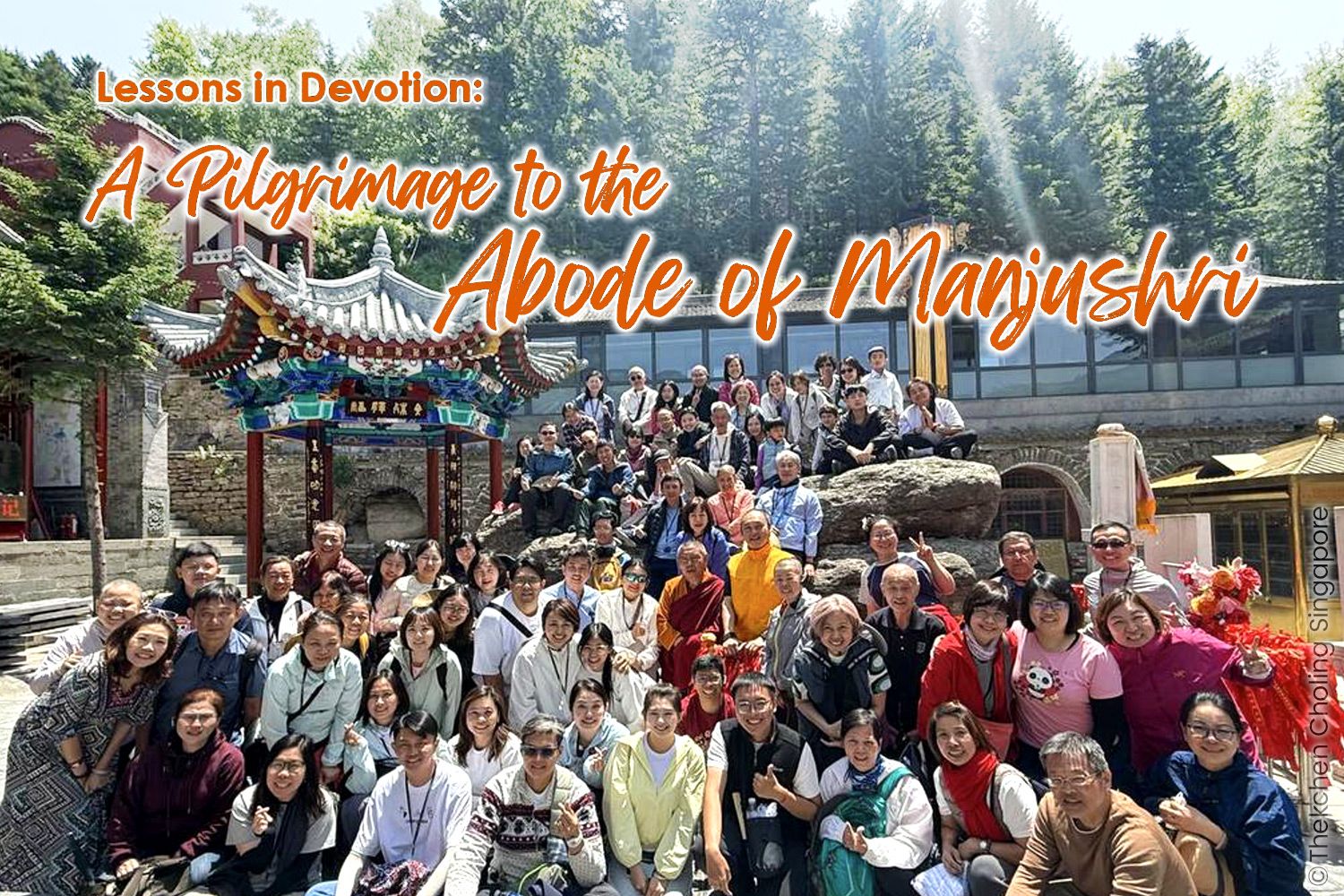
From 3rd June to 15th June 2025, we went on a pilgrimage trip with our Guru, Singha Rinpoche, to China.
We went to a few places – inner Mongolia, Wutai Shan in Shanxi, as well as Beijing. This blog article is a reflection of the trip that we went on together with almost 80 of us – a big Dharma family!
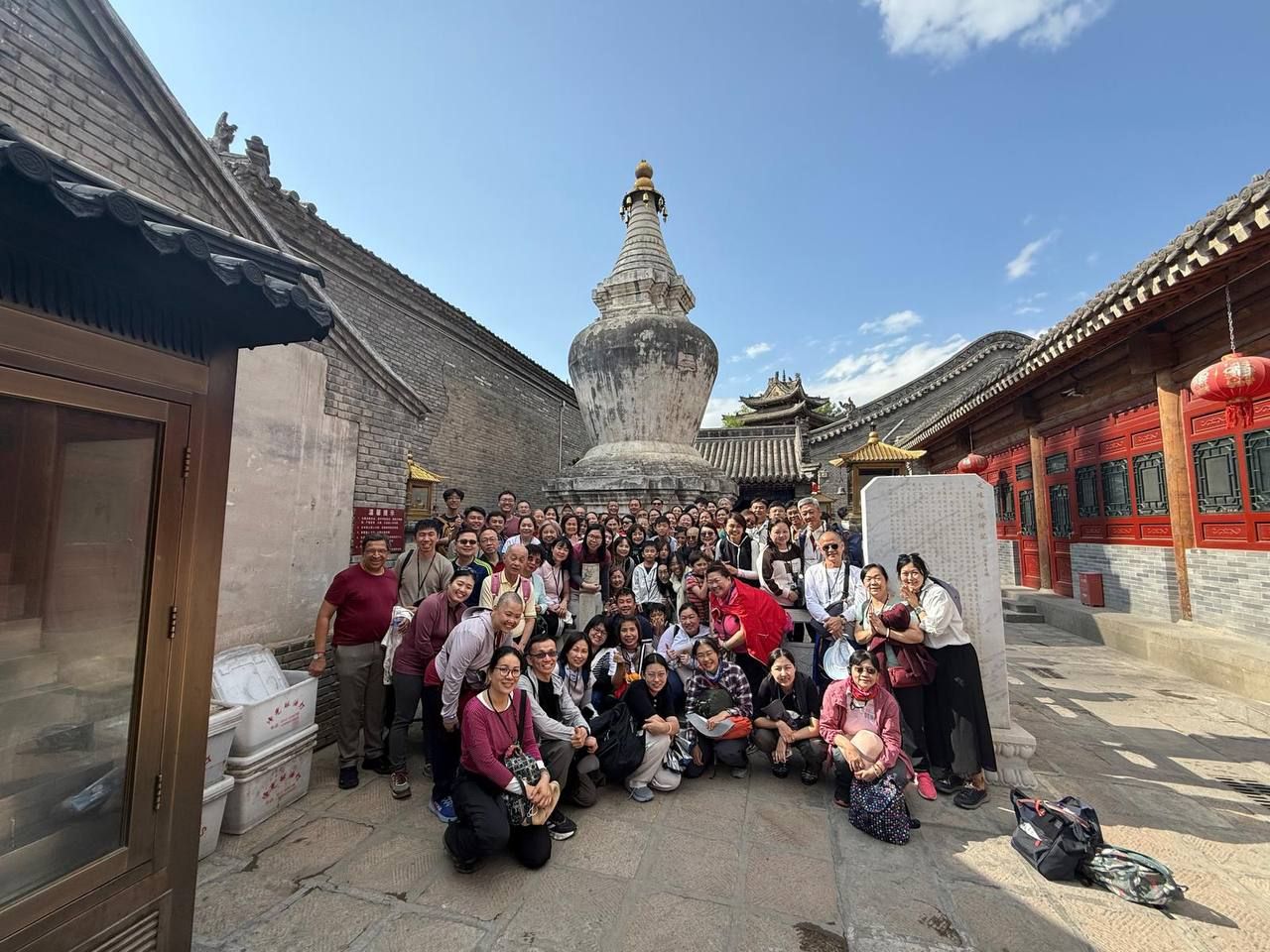
At the stupa which has Manjushri’s hair
The main part of the trip was to visit Wutai Shan, the holy abode of Manjushri. Geshe Kangyur explained that Manjushri was looking for a place to do retreats at, and found Wutai Shan. At first, the mountains were really hot, but after borrowing a cooling rock from the Naga King, the mountains cooled down and became suitable for retreats.
During a trip to visit this huge cooling rock at Qing Liang Temple (清凉寺), Rinpoche explained that this cooling rock is like a teaching, a symbol of having to cool down the heat of samsara.
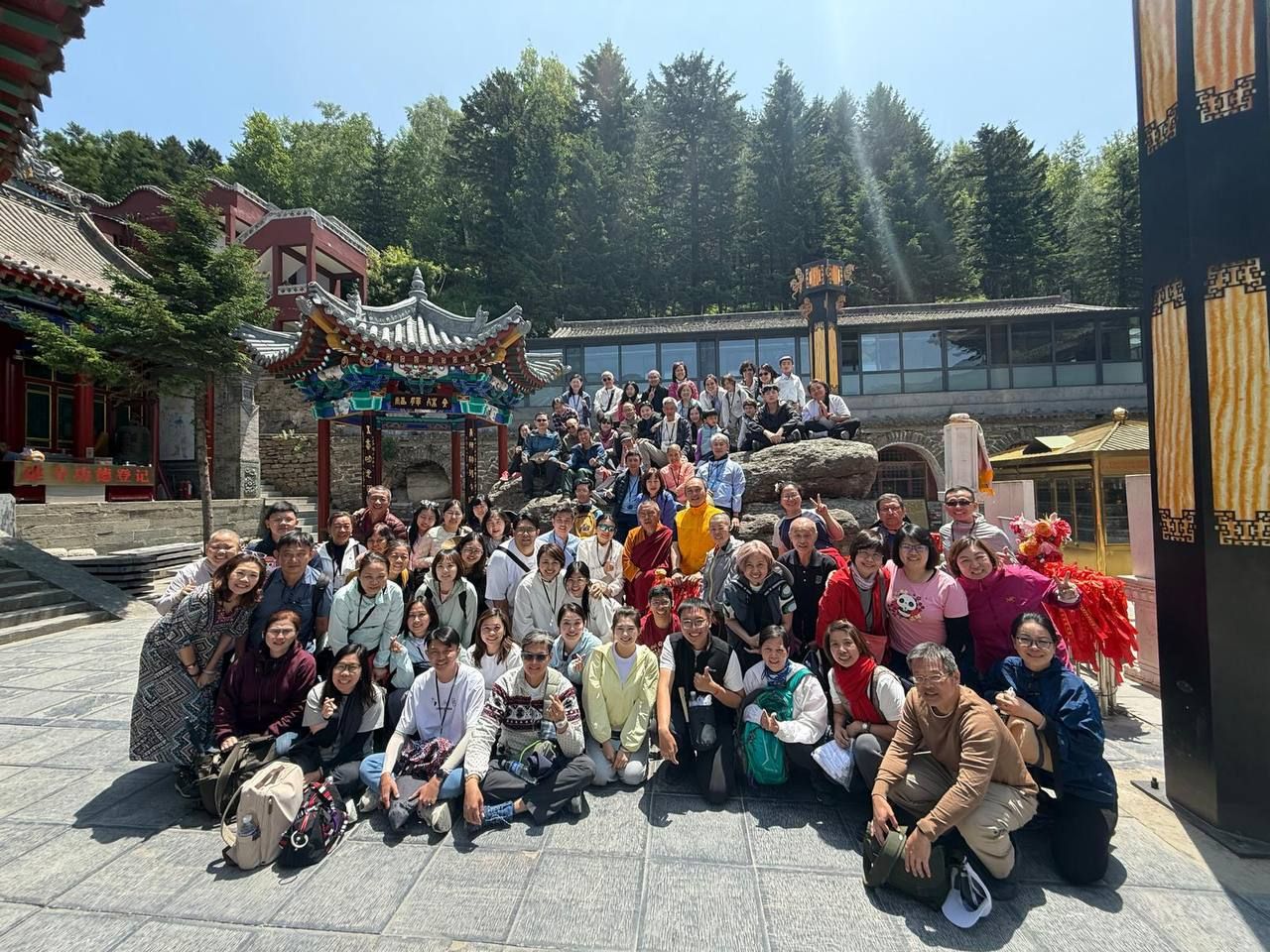
Rinpoche gave us a Dharma teaching at this temple, which I remember in my heart as it was profound. He shared that we should embrace the weaknesses and strengths of everyone, and to not judge people. We should accept everyone. He also shared that everything that we do in samsara only leads to suffering. The only thing that we can leave behind is the support and love we give to future generations. This can be seen in the temples and Buddha rupas that we visited on Wutai Shan. So many of these temples were well-preserved and even though we don’t know who contributed to the temple, what is most important is the legacy that has been left behind for future generations to benefit. It was also during the holy month of Saka Dawa that we visited Wutai Shan, making it a very auspicious trip to gain multi-fold merits for awakening.
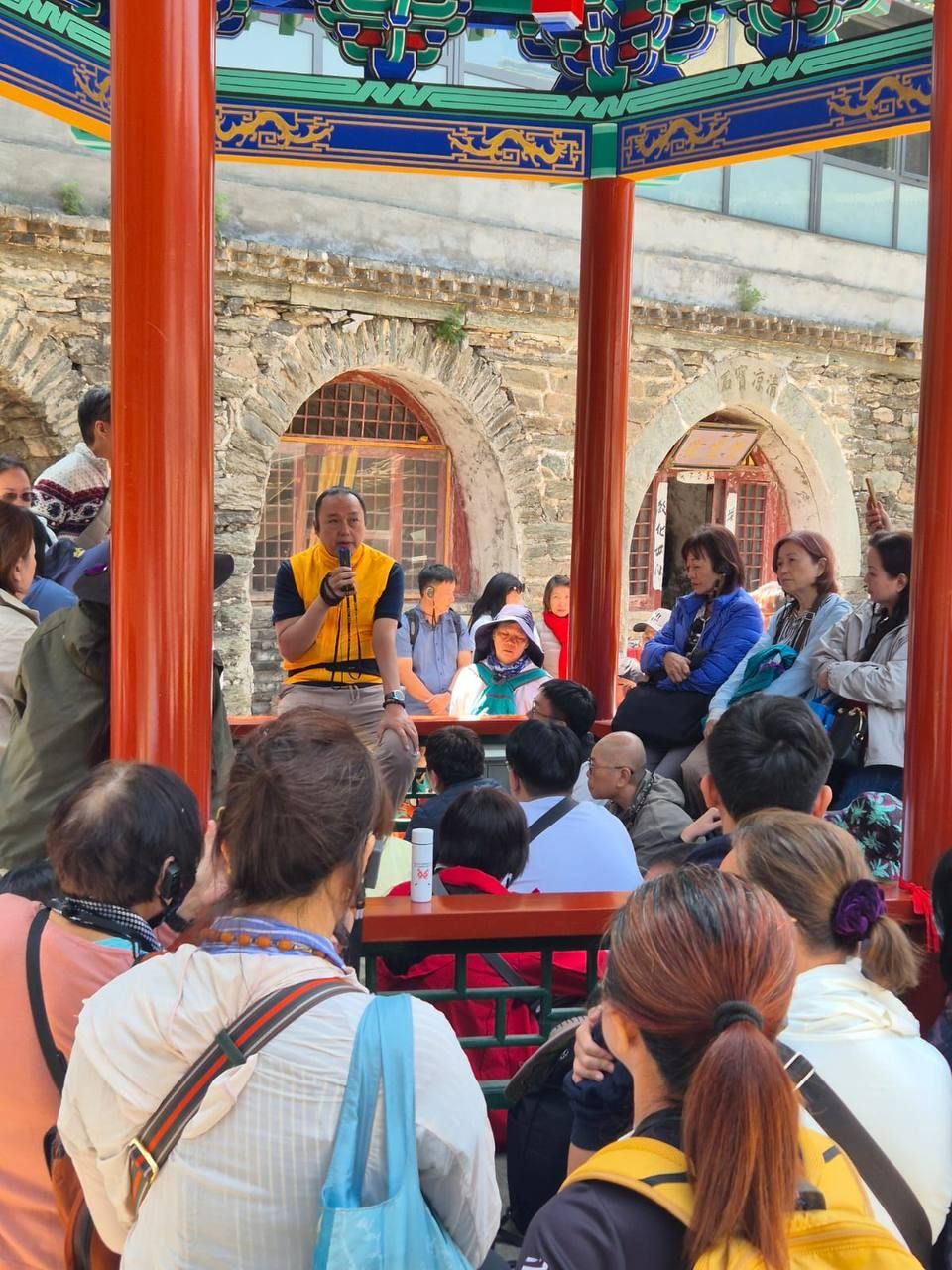
Rinpoche giving a Dharma Teaching at Qing Liang Temple (清凉寺)
Throughout the visit to temples, including the five peaks of Wutai Shan, Rinpoche told us to pray deeply to overcome our own samsara and to awaken. Only by growing out and breaking free from our samsara can we become a Buddha to benefit others. I kept this in my heart and prayed fervently to Manjushri for this to happen. Over the whole course of the pilgrimage, I saw many Dharma brothers and sisters praying sincerely and that really touched my heart. Many of them also kept holding a mala in hand and reciting mantras.
The trip to the five peaks was the most important leg of the journey, which we completed successfully. The first temple of the five peaks that we went to was the most shocking for me, it was at the South peak temple. It was extremely overcrowded, and people were pushing to enter into very small caves at the temple. Although I was scared of accidents happening, I still felt very grateful to have prayed there as we could pay homage to thousand-year-old Manjushri rupas. It was a very holy place indeed. The rush of everyone wanting to pray signified the devotion which people felt towards Manjushri, and made it a very memorable experience.
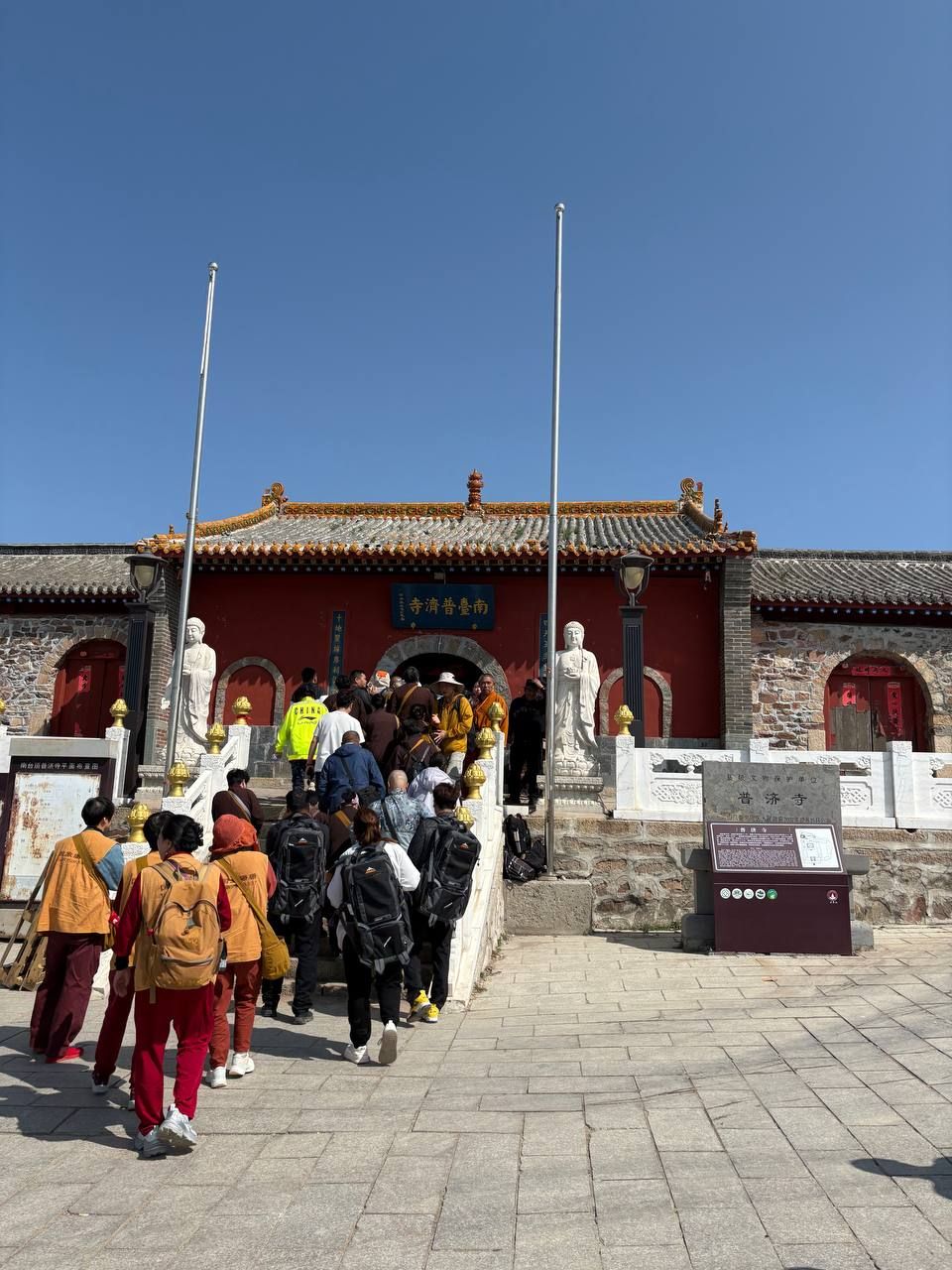
South Peak Temple
The rest of the peaks were not as crowded, and we could proceed comfortably. The driver brought us to all five peaks in one day, and the scenery was beautiful. At one of the peaks, during a circumambulation of the Stupa, we recited praises to Manjushri and recited his mantra. Immediately after, a rainbow around the sun appeared. It was a blessed sign from the Buddhas that we were delighted to see. Rinpoche also gave a teaching that was surprisingly different – he said one word, “Ah!”, and the teaching ended. After which, Rinpoche told us to search up on what the meaning of single syllable teachings are. Although it was abstract, I’m sure it planted a seed within our minds that will ripen in future times!
After the trip to Wutai Shan and having visited numerous holy temples, we descended the mountain on our last few days, to Beijing. The first temple we went to in Beijing was a very special one – Rinpoche said that Lama Zopa Rinpoche instructed him to look for a Chenrezig rupa that had nectar flowing out of its eyes. Rinpoche listened and searched the entire China for this special rupa, and found it at Fayuan Temple (法源寺) in Beijing. This holy rupa temple did not allow lay people to enter, so only Rinpoche and the Sangha could enter. However, we were allowed to offer Khata through the staff, and Rinpoche gave us a stern reminder to not gossip and instead pray strongly for our own enlightenment at this place. We all did our prostrations and prayed fervently. We also prayed for the reincarnation of Lama Zopa Rinpoche to be quickly found by the search party.
For our last day, we went to Yonghe Temple (雍和宮), which has many holy Rupas. One magnificently tall Maitreya Buddha rupa remains in my memory as the largest one I’ve ever seen, at almost five storeys tall! It rained heavily during this visit, but Rinpoche told us that this was a blessing and the water that fell from the roof of the temple that housed many holy Rupas was something we could take as a blessing. We bonded through the heavy rain as a Dharma family that day!
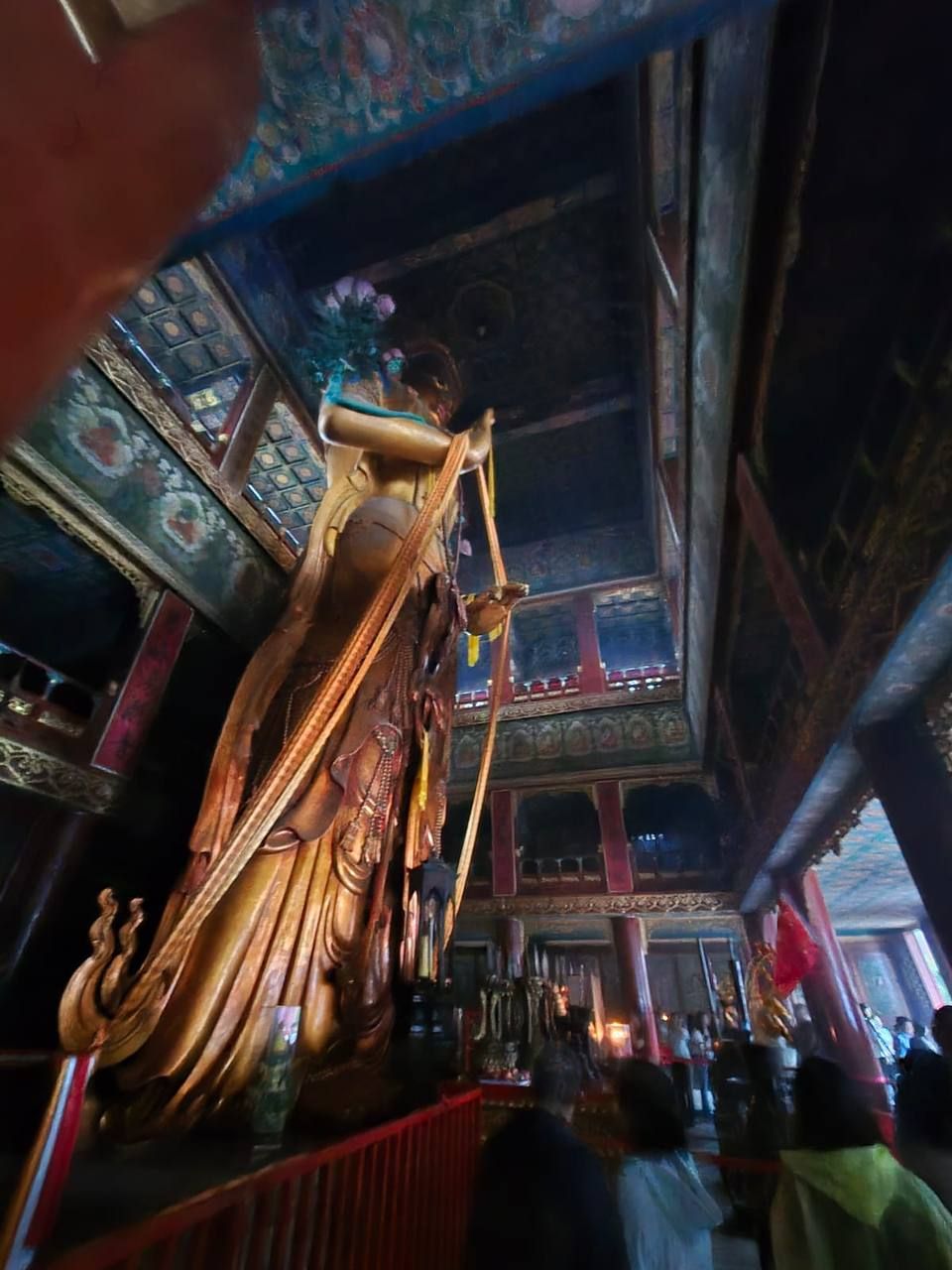
Maitreya Rupa at Yonghe Temple (雍和宮)
Looking back at this trip, there were many memorable moments and shared laughter, fun and talks. I’m very grateful to the people who made this trip possible, and really enjoyed my time with Dharma brothers and sisters. The whole trip was made extra meaningful as I deepened my relationship with everyone. Thank you to my Guru, Singha Rinpoche, for this wonderful opportunity, as well as Geshe Tashi and Geshe Kangyur for guiding us! May everyone’s seeds of awakening ripen quickly and may all virtuous wishes be fulfilled!
If you would like to listen to more Dharma teachings by Singha Rinpoche, or have a deeper connection with Dharma, come join us for our Connect with Guru Rinpoche event happening on 5-6 July 2025! Click here to find out more.
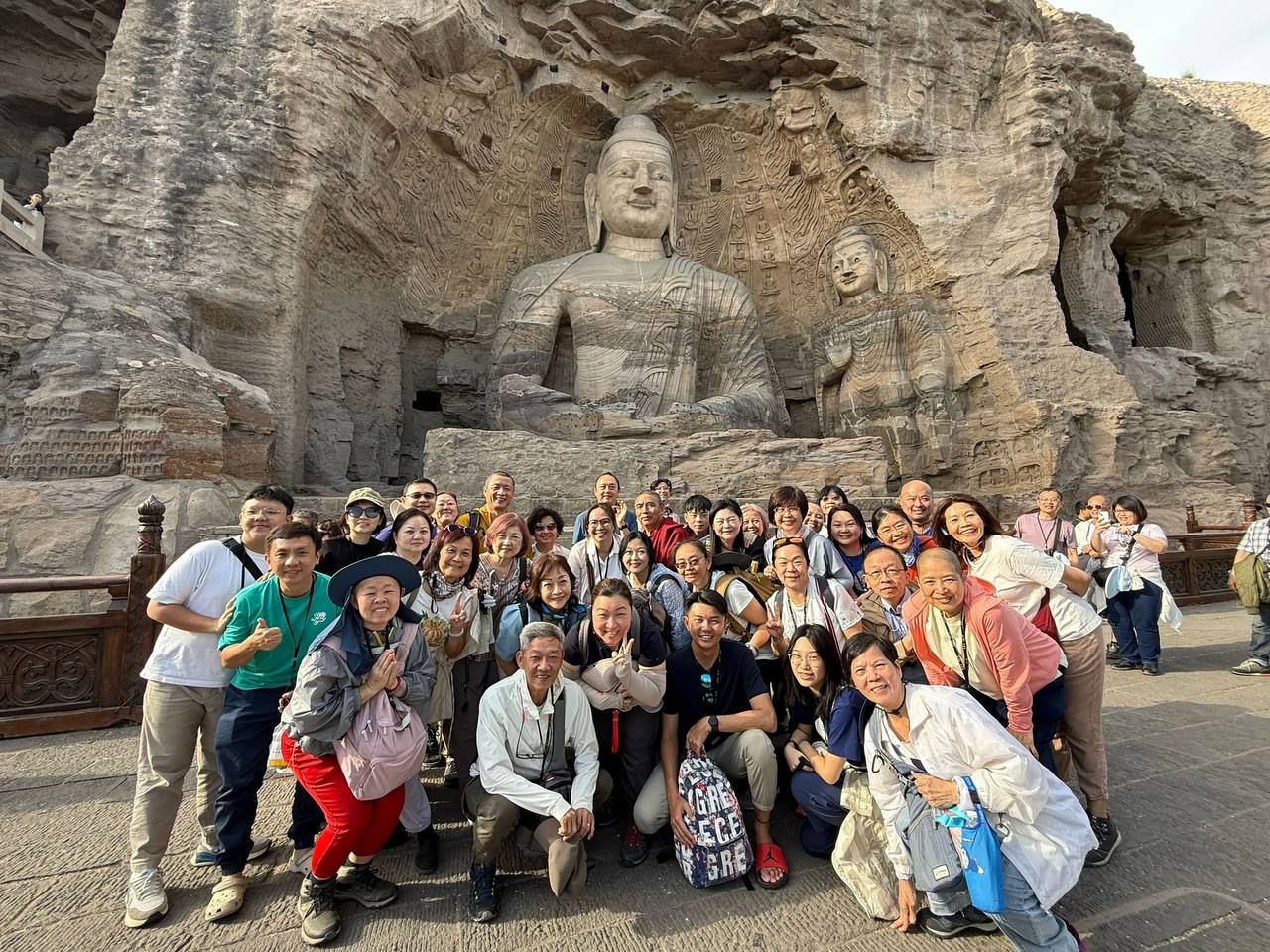
At Yungang Grottoes

